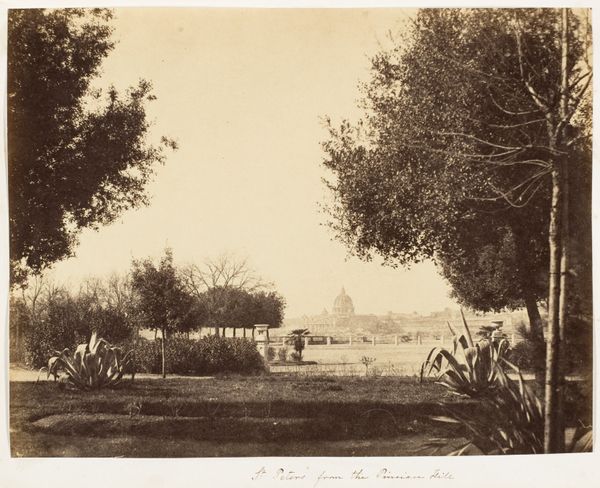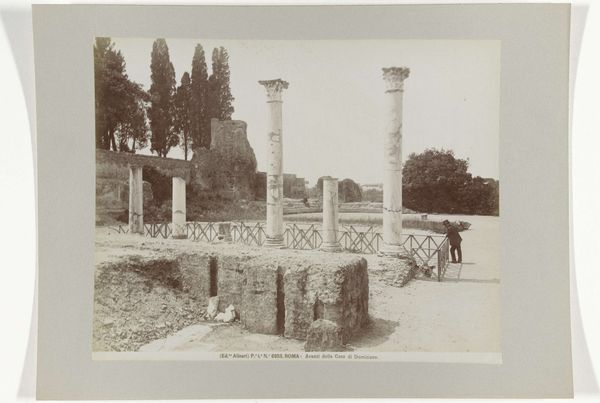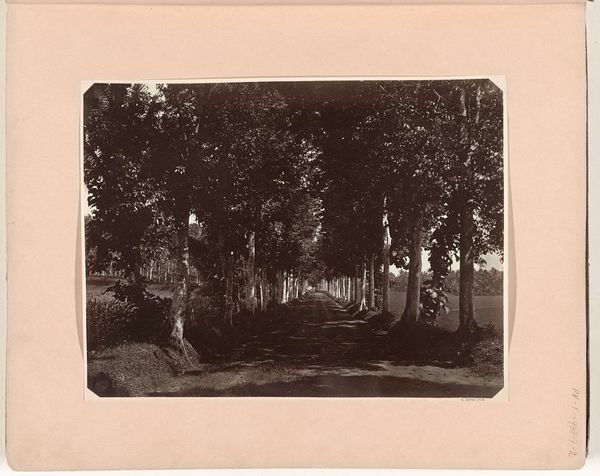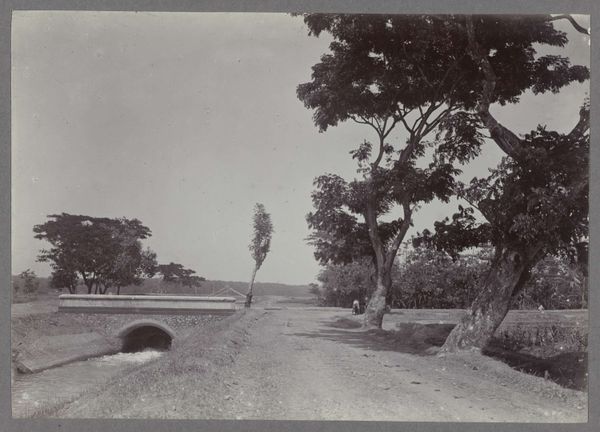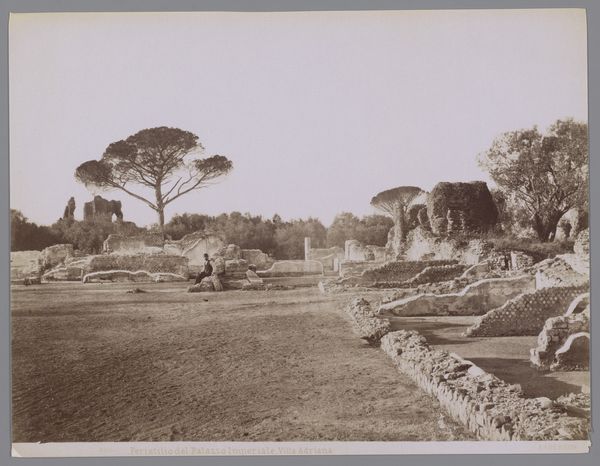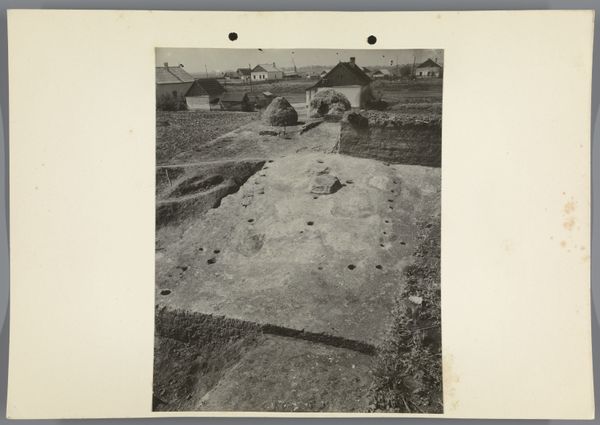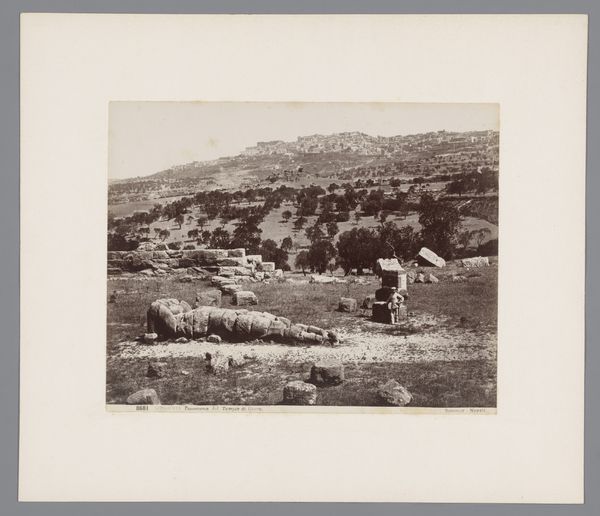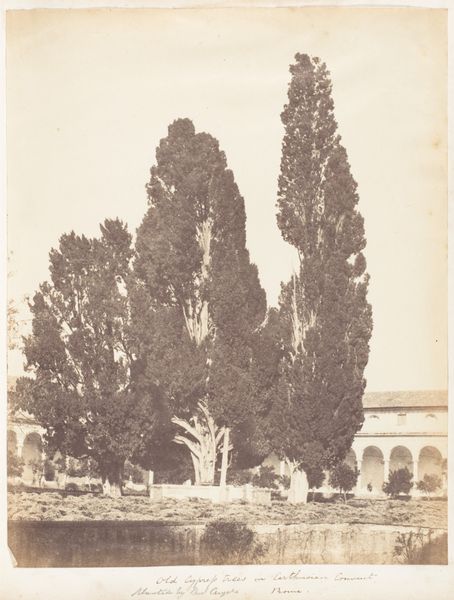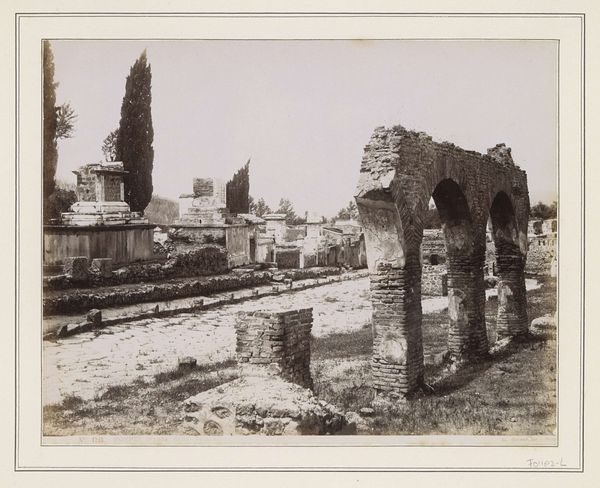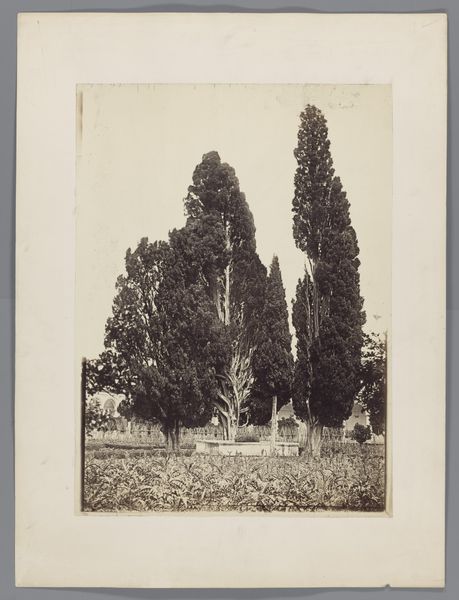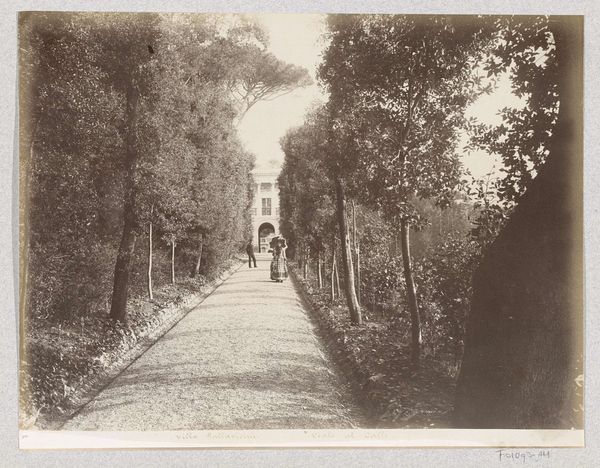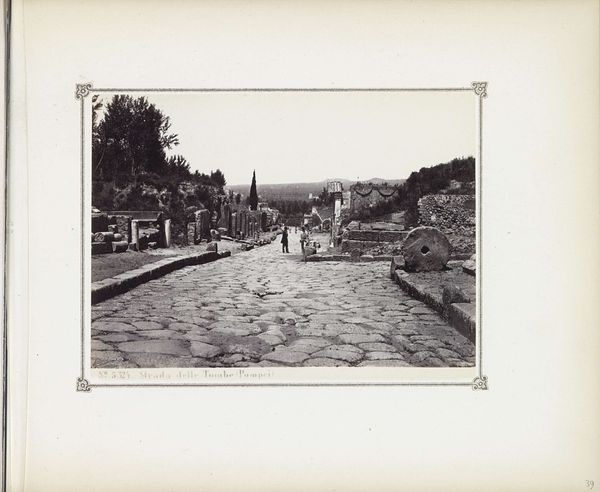![Via Appia met grafheuvels van de drie Curiatii [?] by Fratelli Alinari](/_next/image?url=https%3A%2F%2Fd2w8kbdekdi1gv.cloudfront.net%2FeyJidWNrZXQiOiAiYXJ0ZXJhLWltYWdlcy1idWNrZXQiLCAia2V5IjogImFydHdvcmtzL2Q2MWIzNzkyLTUxNjgtNDVjMy1iY2U3LWNhYTBiYTYxNzg5OS9kNjFiMzc5Mi01MTY4LTQ1YzMtYmNlNy1jYWEwYmE2MTc4OTlfZnVsbC5qcGciLCAiZWRpdHMiOiB7InJlc2l6ZSI6IHsid2lkdGgiOiAxOTIwLCAiaGVpZ2h0IjogMTkyMCwgImZpdCI6ICJpbnNpZGUifX19&w=3840&q=75)
photography, albumen-print
#
landscape
#
photography
#
road
#
ancient-mediterranean
#
albumen-print
Dimensions: height 196 mm, width 250 mm, height 241 mm, width 328 mm
Copyright: Rijks Museum: Open Domain
Curator: Looking at this image by Fratelli Alinari, circa 1880-1895, titled "Via Appia met grafheuvels van de drie Curiatii," made with the albumen print technique, I'm immediately transported. The texture alone... Editor: ...yes, there’s an undeniable stillness. A sense of watching, perhaps, like the spirits are caught in amber along this famous Roman road. It seems caught between memorial and mundanity. Curator: Absolutely! The way the light filters – or rather, doesn’t filter – through the high-key print adds to the hushed, expectant atmosphere. You can almost hear the whispers of Roman history embedded in those ruins. It’s somber yet sublime, but how might Alinari frame its position in social history? Editor: Well, remember the Via Appia wasn't just any road. It was Rome’s strategic and economic lifeline. Photographing it in this period served a nationalistic impulse: visualizing ancient glories at a time when Italy was still forging its modern identity. To display the ‘eternal city' was deeply connected with imperial ideas. Curator: That makes sense! These aren’t just romantic ruins but tangible links to power, expertly curated. Editor: Precisely. And note how devoid it is of contemporary life. The absence emphasizes the road's past, a kind of deliberate framing. It romanticizes a history deliberately abstracted from reality. Alinari are creating imagery imbued with historical reverence for contemporary political purposes. Curator: Right! We know the album print medium added to its commercial appeal as a keepsake or grand tour memento of one’s visit to these ancient ruins. These sepia tones add to that aged, classical feel – making the photograph an immediate antique itself! The image presents Rome's rich historical narratives and picturesque ruins. Editor: Yes, the albumen print served multiple roles: as a historical record, a visual tool for promoting cultural nationalism, and a valuable commercial product marketed to a growing tourism industry. Curator: Beautiful! Alinari created more than a pretty picture, but a multi-layered reflection of Italy's relationship with its classical heritage. Editor: A fitting photograph about legacies that still prompt us to reflect.
Comments
No comments
Be the first to comment and join the conversation on the ultimate creative platform.
